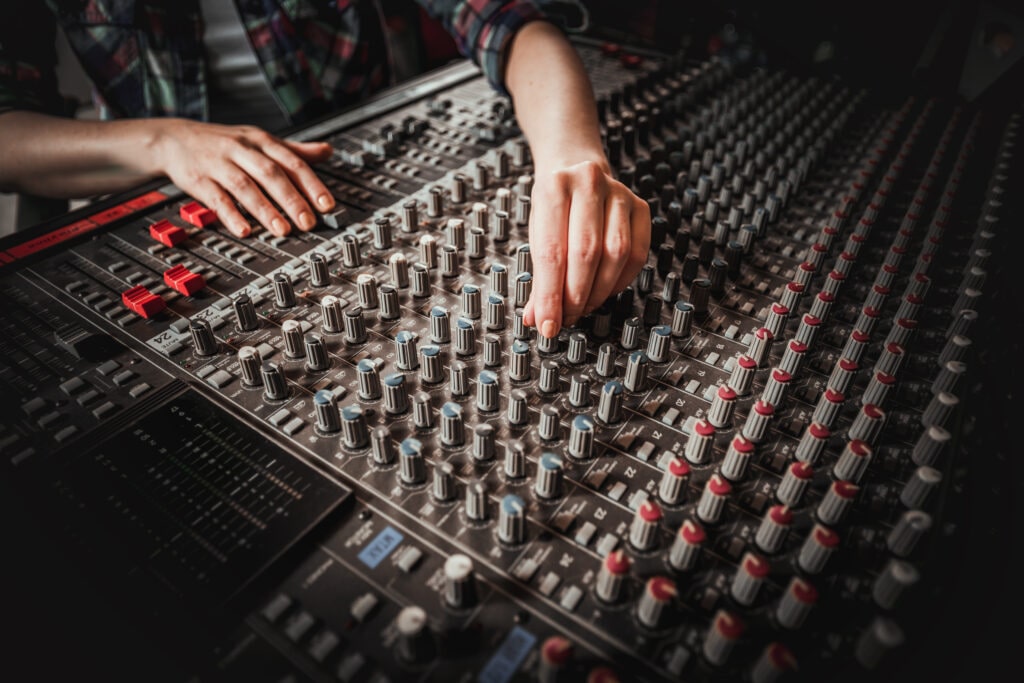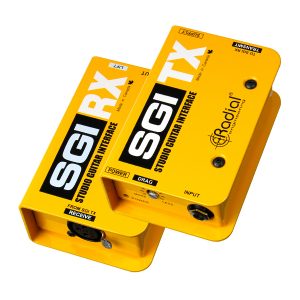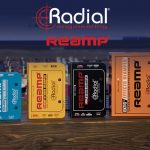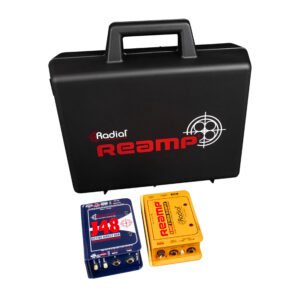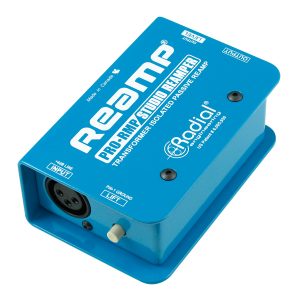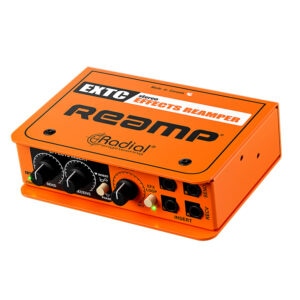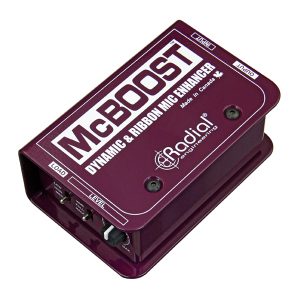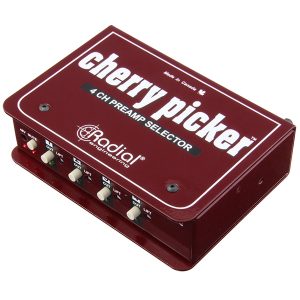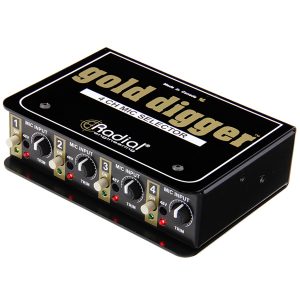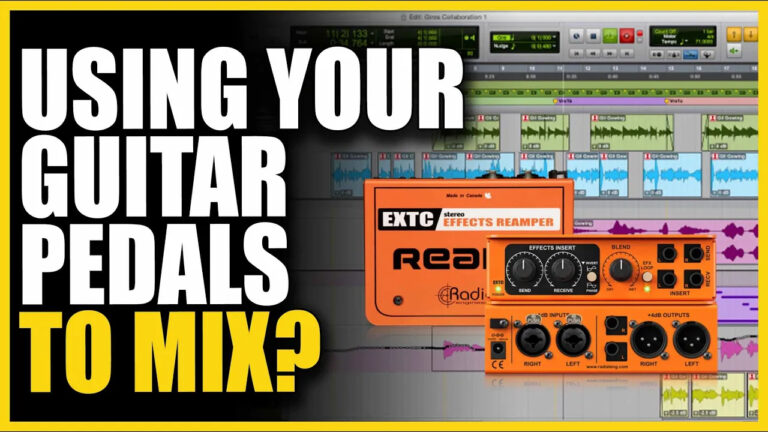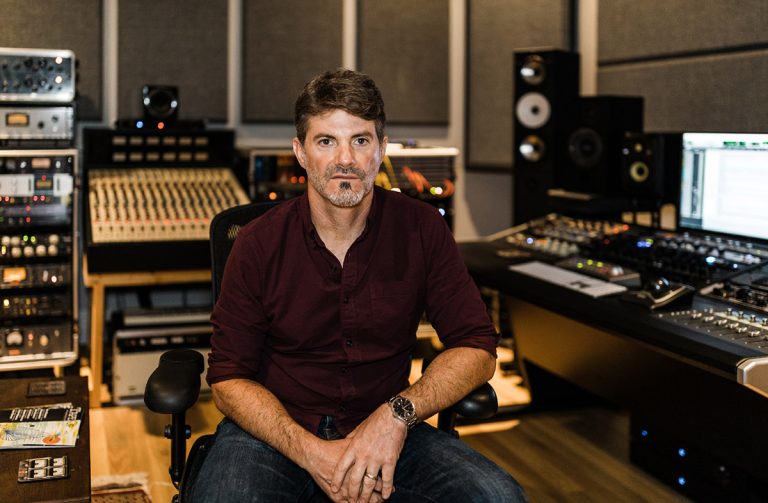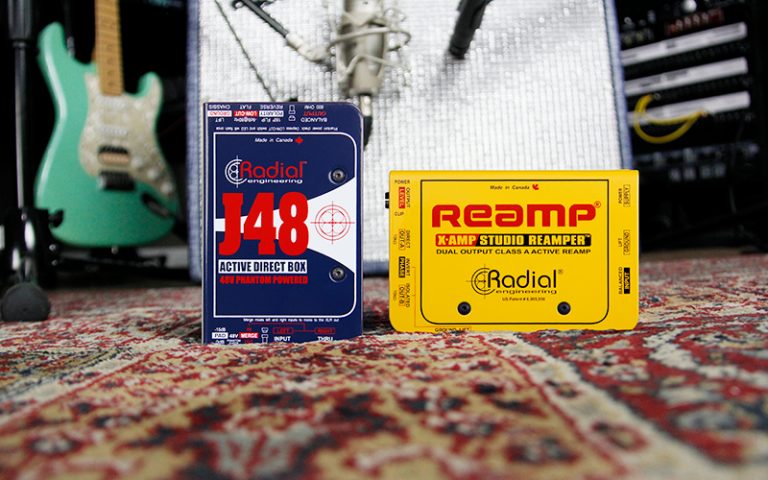There are a ton of production tools for audio engineers out there, and every audio engineer and every recording studio lives by these secret weapons that are unique to them. The best tools are designed to make the engineers’ jobs faster and easier while creating new creative options.
Radial Artist Jacquire King shares some of his studio secrets
But faster and easier can’t come at the expense of quality. That’s why at Radial we’ve built our company on offering these studio solutions with top-tier components, construction, and sound quality. From our famous DIs to our 500-series lunchbox setups, we have the right “secret weapon” for every studio, engineer, and musician.
Audio Equipment Categories
Even with all of the tools and options we offer, they usually fall into a few main categories. So let’s explore four of these audio equipment categories right now. We’ll look at what each category is, what they’re for, and why they’re essential. We’ll also highlight the best Radial products for the job.
● Line Drivers
● Reamping Systems
● Microphone Activators
● Signal Routing/Splitting
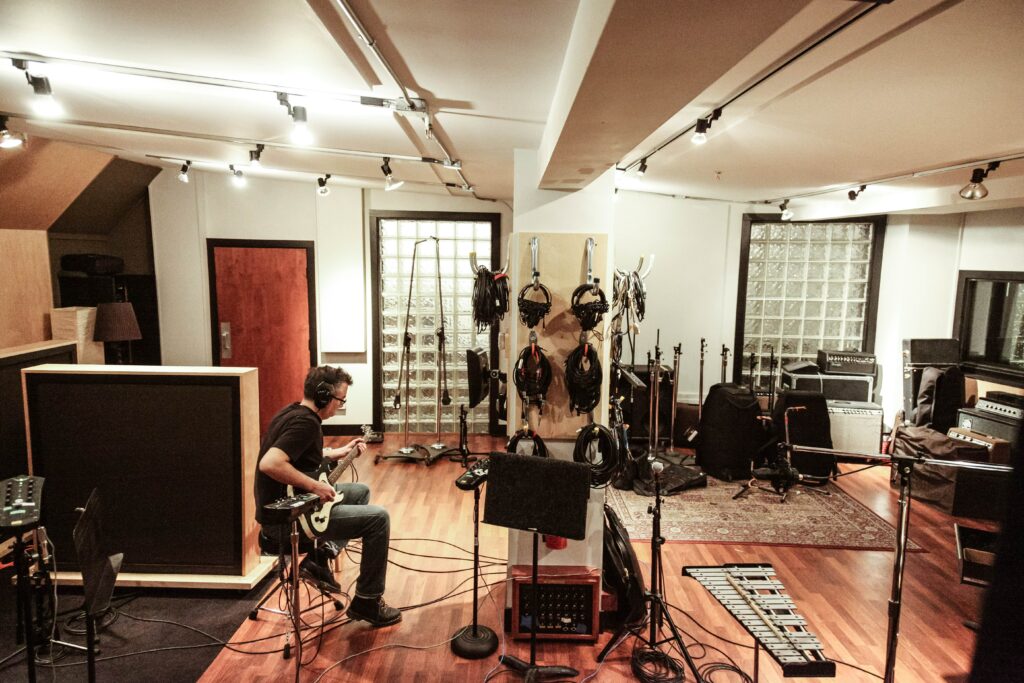
Line Drivers
The signal coming off of a guitar pickup is high impedance and extremely weak. This makes it very susceptible to tone loss as it travels through the signal chain. Often, long cable runs and effects pedals are the usual culprits for degrading the tone of your guitar. Each adds capacitance and is much like turning the guitar’s tone knob back. This robs the signal of its top-end detail.
Line drivers are critical if you need to send these audio signals over long distances. By matching levels and impedances of the source signal and its destination, line drivers give your signal added strength and help it resist signal degradation brought on by capacitance.
As useful as this is in an on-stage scenario, line drivers are also super helpful in recording studios for much of the same reasons. They allow studios to keep the loud amplifiers in loud live rooms or booths while the guitarist plays in the control room, all without any signal loss. The same goes for reamping loud guitar amps. Put a good-quality line driver between your output and amplifier, and you’ll capture the authentic sound of the original guitar track.
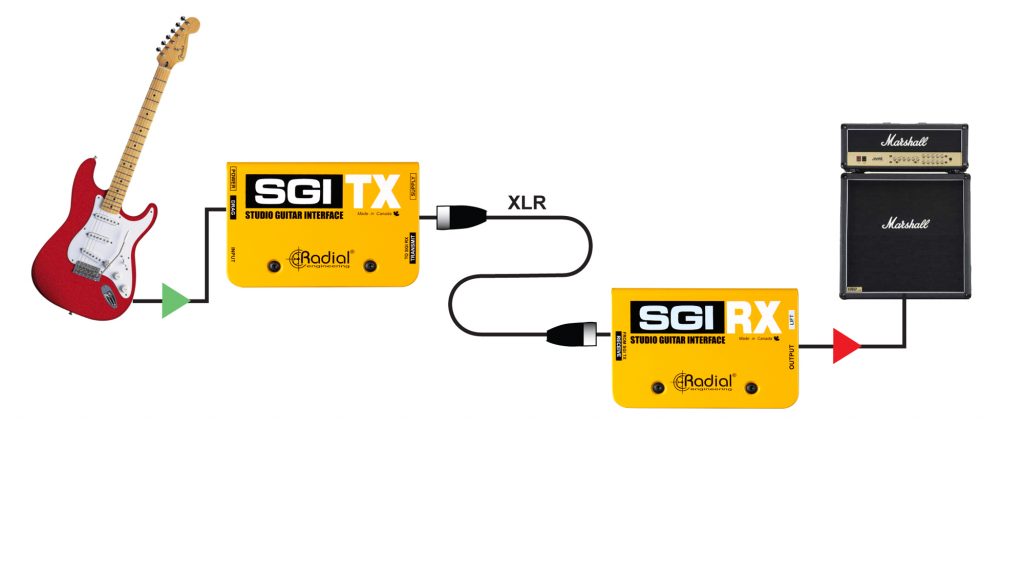
Line drivers are extremely important for guitarists who rely on long pedalboard leads to reach distant amps and/or cabinets for isolation purposes. Do you run your amp off-stage? Then a line driver is for you!
But line drivers aren’t only for guitarists. They are the perfect solution for any time you need to send an instrument’s signal over long distances with pristine quality.
Radial SGI
The Radial SGI is one of the most popular line drivers on the market. Every component and design element is custom-built to drive guitar pickups levels up to 300 feet without any tone or level loss. It’s just like plugging a guitar into an amp that’s sitting right next to you. This maintains the player’s intended tone, response, and dynamics.
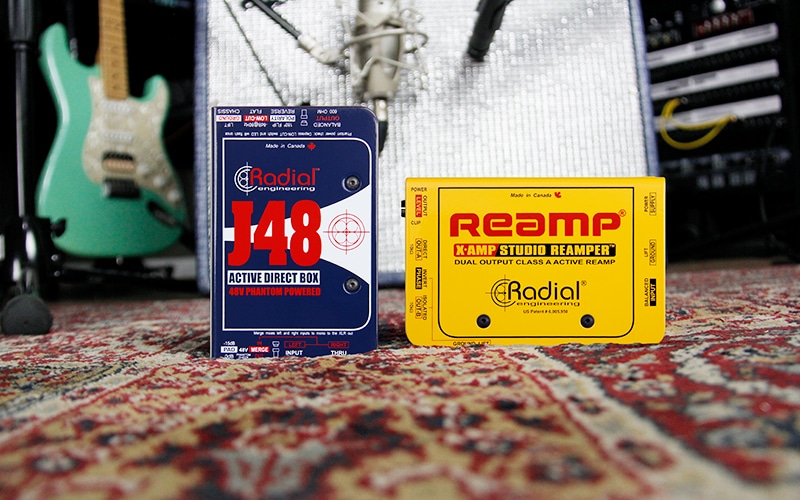
Reamping Systems
Capturing stellar electric guitar tones used to take forever. Bands had to book enough time in the studio to try a million different guitars, amps, and pedals. Then the engineers had to match those with the suitable recording signal chains. It led to some incredible tones and albums, but it was exceedingly expensive and time-consuming.
Today, recording is a very different thing altogether. The internet and lower prices on pro-quality recording gear mean more major studios are closing their doors with the rise of the home studio. Many recording engineers even rely solely on in-the-box solutions like VSTs and guitar amplifier modeling, eliminating the need for large live rooms completely. But as great as they can sound, it’s just not the same. And you can hear it on the albums.
Enter Reamping:
Reamping is the process of sending a guitarist’s pre-recorded DI guitar track back out of the recording system through a guitar rig and re-recording that sound. This method gives engineers perfect consistency while auditioning a plethora of gear to get just the right sound. And they can do it exponentially faster.
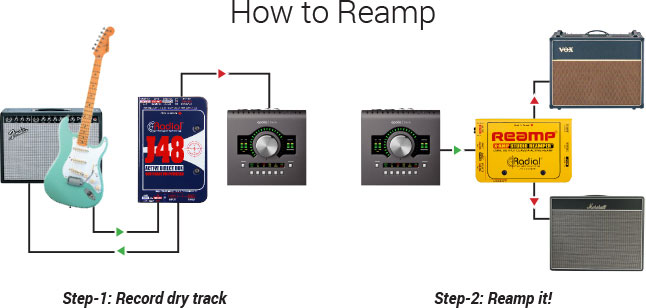
But reamping does take some planning and gear.
The first thing you need is a pro-level DI box to condition the guitar’s signal for direct recording. It ensures a pristine signal and proper representation of the instrument. You’ll also need a dedicated Reamp® box. Think of them as highly specialized DI boxes, but in reverse. They are responsible for sending the pre-recorded track to the guitar rig. And thanks to their impedance and level matching, your amp or pedals think they see an actual guitar pickup.
Side Note
Standard DI boxes won’t work as Reamp® boxes. They do not provide the correct level adjustments and introduce noise into the signal when used this way.
Radial offers several reamping options that are perfect for this application. Each boasts a slightly different feature set for various reamping needs. We even offer a complete package in one device with the Reamp® Station, comprising the J48 and the JCR.
That said, there are a few standard features to look for in all Reamp® boxes.
● Correct I/O
● Output gain control
● Ground lift switch
Find out which of Radial’s range of reamping products is right for you:
Reamping: Exploring the Differences
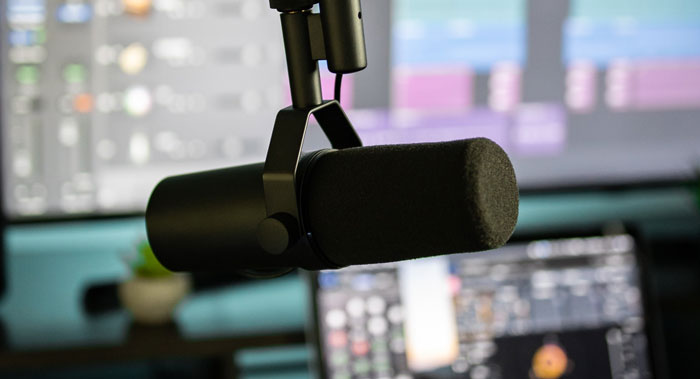
Microphone Activators
There are a lot of great-sounding microphones that still need a helping hand from time to time. Even some of the most lauded ribbon designs need a bit of a gain boost to realize their full potential.
“But isn’t that what a microphone preamp is for?”
The answer is yes and no.
Yes, because preamps raise the mic-level signal to line-level. But not all mic- and line-level signals are created equal. And because ribbon microphones are infamous for their low-level output, you’ll often have to crank the preamp’s input gain. That’s why placing a boost – like a mic activator – before the preamp is a good idea.
Drop a mic activator after the mic in the signal chain, and your mic pre will receive a strong and clear representation of your sound source. Now you can back off your pre’s input gain, which can significantly lower the noise floor. The signal will be much easier to control and offer a much more detailed sound.
McBoost
Mic activators aren’t just for lower-powered ribbons. They work so well that most mics will benefit from their use. Our McBoost is a perfect example. With its 3-position impedance selector and variable gain, it brings ribbons to life, and if you try it on a dynamic mic like the Shure SM7B, and you’ll never go back.
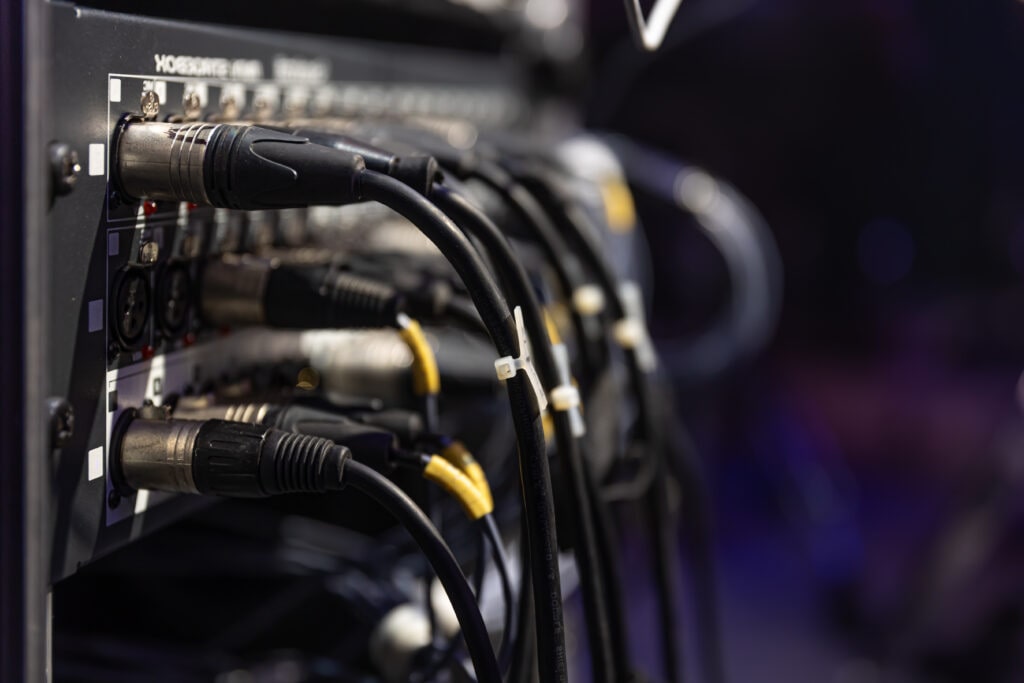
Signal Routing/Splitting
Whether you’re a working artist or studio engineer, you know the importance of organized and clean signal routing. Having a spaghetti-like mess of cables all over a studio floor is not only unsightly, but it’s an accident waiting to happen and can affect your sound.
Luckily, there are a million different professional signal-routing products available. From monitor switchers to patch bays, simple A/B pedals, to wireless signal routing, the options are endless. But when it comes to “secret weapons,” signal splitters that allow for fast and easy gear comparisons are at the top of the list.
Cherry Picker & Gold Digger
Signal splitters like the Radial Cherry Picker and Gold Digger let you shoot your microphones and mic preamps out on the fly. They’re perfect for finding the right signal chain for a particular vocalist or other sound sources. No more digging around behind racks of equipment. No more constant repatching. And no more having to remember what you think the last piece of gear sounded like 20 minutes ago.
It’s all yours at the push of a button.
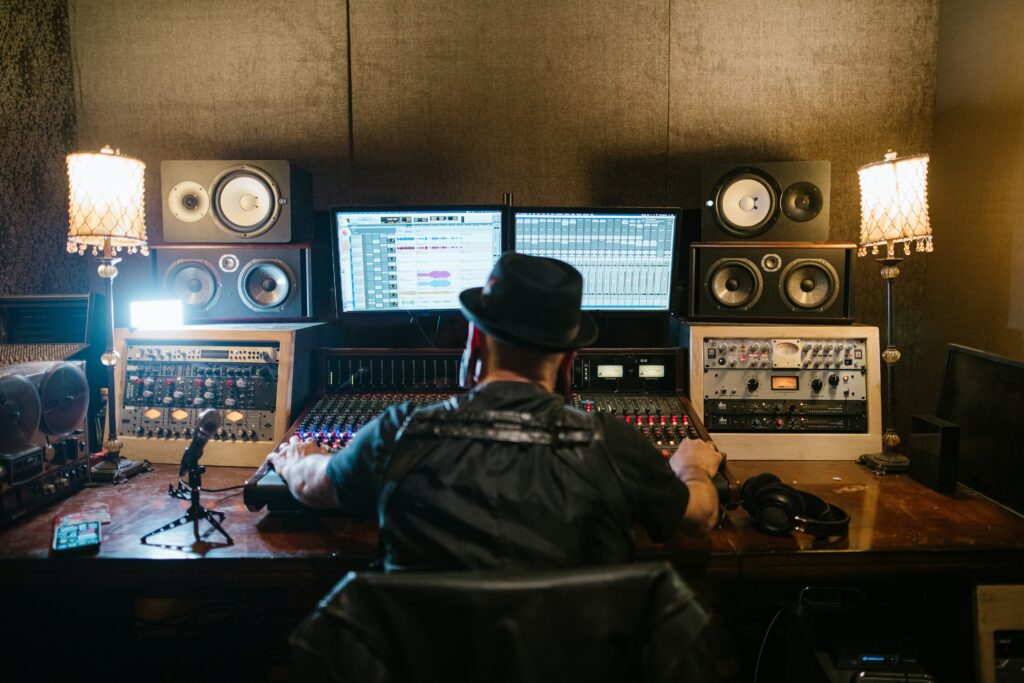
The Wrap
This article highlights just a tiny sampling of the products music makers use daily to achieve the best-sounding tracks. These “secret weapons” might not be a shiny new instrument, a vintage tube pre, or compressor, but they are the reason those pieces of gear sound as good as they do.
If you need help solving signal issues or want a Radial secret weapon of your own, send us a note or give us a call at (604) 942-1001. We look forward to hearing from you.
And don’t forget to stay up on our blog for a lot more great info, tips and tricks, in-depth tech dives, and more.



